As spring comes around many people see their lawn emerge from under the snow and want to get it spruced up and looking good for the warmer weather. This can take them to the local nursery, farm/ranch store, or big box store where from they return home with a weed and feed commercial fertilizer. They apply the fertilizer just as the container informs them to, and viola, in a few weeks they have a dark green lawn with no weeds. Mowing the dark green lawn produces some attractive dark green lawn clippings, and the thought often occurs to use these lawn clippings for something else, such as compost, mulch or perhaps even feed for livestock.
The quick answer to whether you should use lawn clippings that have been treated by a weed and feed chemical for use as compost, mulch or animal feed is NO, unless you treat it. (What you may not know however, is that you can treat it in a compost pile with fungi to make it beneficial for secondary use).
This article discusses the effects of weed and feed fertilizer on grass clippings, and the fungi treatment that can aid in making those grass clippings beneficial again.
What are these weed and feed type fertilizers?
Weed and feed fertilizers are readily available at your local farm/ranch stores, local nurseries, and big box nurseries. They are often part of a season long system of treatment for your lawn. You begin with the weed and feed, then supplement for summer feeding and usually there is a fall treatment.
The concept of most of these weed and feed fertilizers is that they contain a pre-emergent herbicide to stop other plants/weeds from germinating. This herbicide remains in the soil for quite a while and keeps plants like dandelions and crabgrass from growing. It also has nutrients like nitrogen and iron supplements to feed the turf.
These pre-emergent chemicals are long-lasting and quite effective. Many of these pre-emergent chemicals have been developed over time to be more and more effective. The effectiveness has also made these chemicals long lasting, often remaining in the soil and turf grass for years.
Are pre-emergent herbicides good or bad?
There is much controversy about the use of pre-emergent chemicals. Many focus on the argument that pre-emergent chemicals are harmful to the environment, while others believe that they are the best answer to a great looking lawn free of dandelions and crab grass.
Weed and feed fertilizers have proven to be effective in stopping unwanted weeds to germinate in conjunction with providing your grass a good nutrient mix that leads to a great looking and healthy lawn. Additionally, these weed and feed fertilizers are easy to use. Often, an individual with little to no lawn care experience can get excellent results simply by following the procedures listed on the package.
The downside of these weed and feed fertilizers comes from what the pre-emergent herbicides do beyond making the lawn look great. As stated above, the herbicides will remain in the soil and turf grass for years. When you compost the clippings, the herbicide remains in the compost. If you feed the grass clippings to livestock or animals the herbicide will remain in the animal’s droppings even after the clippings have gone through the animal’s digestion process. These pre-emergent herbicides are pretty tough and strong.
When you try to use compost from grass clippings treated with pre-emergent herbicides in your garden, these herbicides will work to hamper your garden plants from germinating in the same way they work to hamper weed growth in your lawn.
If you incorporate manure from animals that have been fed pre-emergent herbicide treated clippings into your garden you will yield the the same results. If you feed those grass clippings to the animal, the herbicide goes through to the manure and gets incorporated into your garden.
Many gardeners have lost their entire garden when they used manure from animals that had been fed from a source treated with a pre-emergent herbicide. Similarly, using compost from weed and feed treated grass clippings has produced the same result…. loss of the entire garden.
So, as far as good and bad, the debate will go on. If you want a great looking lawn and don’t care about much else, you can sleep soundly using the weed and feed fertilizer.
If you are concerned about growing a garden beyond your lawn, and you want to use the benefit of grass clippings, you really need to consider the long-term effect of the weed and feed fertilizer.
Many green waste and composting facilities have banned grass clippings. One of the major reasons is the effects of the herbicides being used on the grass. These herbicides are contaminating the compost, and killing plants instead of helping plants.
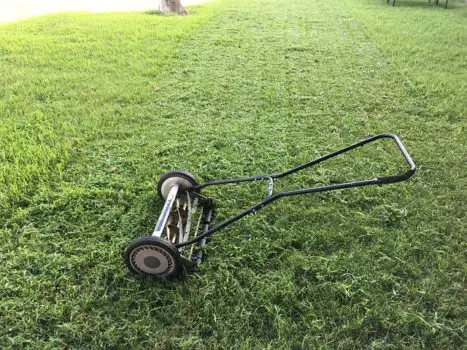
How can I treat the lawn clippings?
What do you do if you have used weed and feed in the past, or you have purchased a home where they have used weed and feed fertilizer before you got there? This is assuming that you want to use your grass clippings for compost or garden mulch.
There is an option available to treat the grass clippings. It isn’t all that different from composting the grass clippings as you normally would. You will need to use a fugus instead of bacteria to break down the herbicide. Fungus is being researched to aid in the transformation of toxic ground into usable ground. This bioremediation process is currently being used and researched across the globe; here is and interesting article describing it.
Most compost piles will use a bacterial action to process the organic matter into compost. When composting grass clippings that have been treated with weed and feed the bacteria will break down the fiber of the grass leaving the herbicide intact and ready to stop plants from germinating. You will get great looking compost but the pre-emergent herbicide will still be intact and viable to stop germination of you plants.
When using a particular fungus, the fungus will eat the herbicide. The fungus sees the herbicide as just another piece of food. Fungus consumes its food by spreading the digestive enzymes on the desired food then absorbing the nutrients after the food has been broken down. This is the method it uses to break down the herbicide that it treats as a food source.
This process breaks down the herbicide into smaller particles. This will stop the herbicide from being an herbicide and making the grass clippings ok to use. The majical fungus that works to break down the herbicide is white rot fungus.
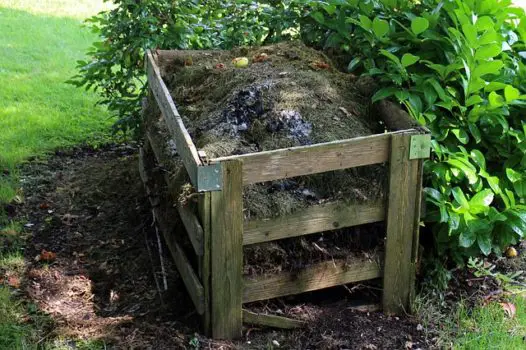
The process of creating a fungal compost pile.
Creating a compost pile that utilizes fungus is similar to creating a regular compost pile. Here is an 8 step process.
- You will want to begin with mulch that has a lot of tannin in it. You will want to focus more on leaves and bark, not wood logs, chips, or newspaper. Oak leaves are recommended.
- Stir in the grass clippings
- Get some white rot fungus. To get some of this fungus you will need to take a walk in the woods. Similar to a mushroom hunt, you can find white rot in decayed logs.
- Chop or blend up the fungus and add water. You will want about a quarter cup of fungal material to a quart of water.
- Spray the mixture over the entire pile.
- Water the pile well.
- Keep it watered every day. You want to grow this fungus.
- In a few weeks the fungus will be growing and eating the herbicide and detoxifying the grass clippings.
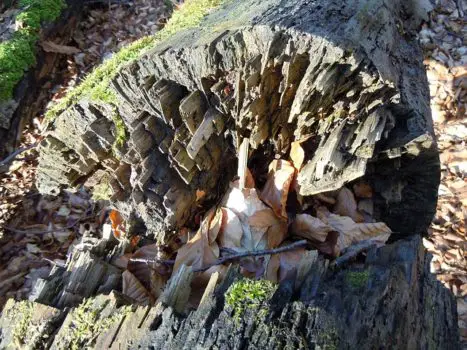
You can detoxify your lawn by spreading the fungal compost over the lawn and water in as well. You will need to keep the lawn and mixture wet for the fungus to grow and eat the herbicide. This process can invigorate your lawn and create a good source of non-toxic grass clippings to use in the future.
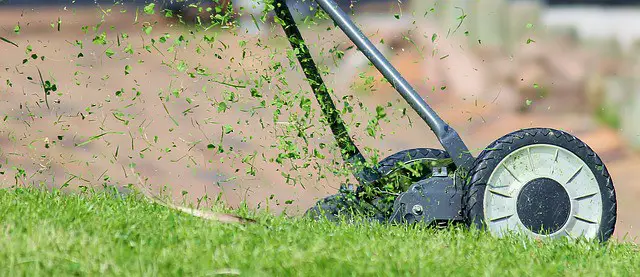
You do not really need to compost grass clippings in the first place.
I believe that cutting grass long (meaning, using a “taller” setting on your mower) and just letting the clippings go back into the grass is the best method of dealing with grass clippings. The nutrient is added back to where it is needed. The extra grass clippings will help in water retention of the lawn. Additionally, it is just a cheaper and more ecological method of taking care of grass clippings.
If you cut your grass longer it will more than likely crowd out the other weeds. Allowing your lawn to grow a bit taller will eliminate the need for a treatment of weed and feed fertilizer. I personally have used the method of cutting the grass long and letting the clippings be incorporated directly back into the lawn for years. The result has been great, with less need of fertilization and less water usage.
Summary
You can use grass clippings from grass that has had an application of weed and feed fertilizer. It will require some steps of composting and introduction of white rot fungus. The fungus will eat and break down the herbicide making it less toxic to use on your garden.
However the best thing to do would be to incorporate the lawn clippings back into the lawn and create a healthy lawn where you wouldn’t have to use a weed and feed fertilizer, or commercial treatments.

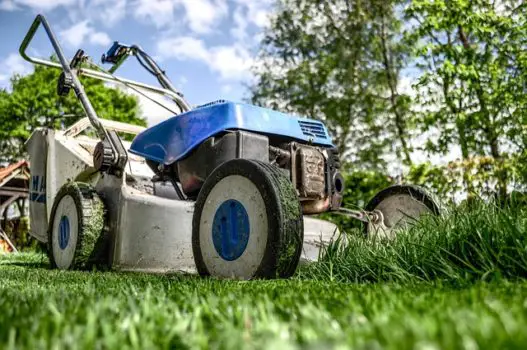
Loved the grass clippings comment and information. I will get the commercial weed and feed and git my peas in the ground soon.
Just get feed fertilizer. Stay away from the weed and feed fertilizer. The wed chemical will plague you for a long time.